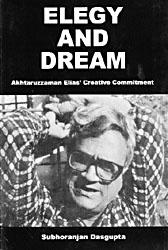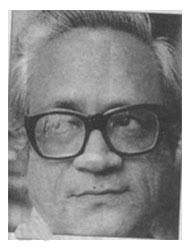DESHeSHOP
DotCom


Gokul Medh a historical
relice at Mohastan garh, Bogra
|
Bogra: The first
cyber info city of Bangladesh

|
|
|
|
Akhtaruzzaman
Elias: (*1943 +1997) wrote
only two novels - Chilekothar Sepai (Sentry
of the Attic, 1986) and Khoabnama (Dream- Elegy,
1996) but he has created a permanent place in the history
of Bangla novels. In the context of the novels of Bangladesh,
he is possibly the second person highest acclaimed after
Syed Waliullah (1922-1971).
Elias
started his literary career with the volume of short
stories Anya Ghore Anya Swar in 1976, though
before it his Chilekothar Sepai began to be published
serially in a national daily. By then he came in limelight
as a serious and committed fiction writer.
|
|
|
Elias
aspired to capture five decades (1940s to 1990s) of his tormented
homeland within a broad and multi-layered canvas and this
he could do best in his two unforgettable novels - Chilekothat
Sepai (Sentry of the Attic) and Khowabnama (Dream-
Elegy). While the first portrays the political resurgence
which led to the war of liberation in 1971, the second depicts
the turmoil of Partition-politics in a village in Bangladesh
in the 1940s. Indeed, the second (Khowabnama) has already
become a classic by invoking the revolts of the past - Sanyasi
and Fakir uprisings in the 18th Century - and linking these
with the historic Tebhaga movement of the 1940s. There is
no doubt that Elias swore allegiance to the oppressed and
that is why he condemned the Partition of Bengal as a ploy
to deceive the exploited, both Hindu and Muslim. Both these
novels attest to Elias's abiding faith in Marxism.
"Elias'
Marxism is much more rigorous than bourgeois Thomas Mann's
socialism... he applies his own ideology to trace his own
redemptive elegy which is different from primarily humanistic
ends" commented Subhoranjan Dasgupta, a renown Bengali
novelist.
Awards:
Bangla Academy Award (1983),
Alaol Literary Award (1987) Ananda Award (1996).
Elias
deserves a reputation as the most powerful novelist in the
Bengali literary world after Manik Bandyopadyay.
|
|
|
The
book is an evaluation of the creativity and ideology of
Akhtaruzzaman Elias, a brilliant novelist and short story
writer of Bangladesh. Elias died at the unripe age of 54
(1943-97) and wrote only two novels-Chilekothar Sepai (Sentry
of the Attic) and Khowabnama (Dream-Elegy). But these two
texts and his short stories, not many in number, have turned
him into an icon, remembered and revered. The Author examines
Elias's poetry, short stories, two novels, and his cosmovision
and then analyses the varied responses of the readers of
Bangladesh. Here, aesthetic judgement is refracted through
the prism of ideology. In fact, by applying the theories
of the neo-Marxians and post-moderns (Theodor Adorno, Frederic
Jameson, Jacques Derrida and others) to the creative texts
of Elias, he demonstrates how theory and praxis come to
be interwoven is a comparatist's discourse. This is the
first evaluation of Elias written in English, an author
whom illustrious writers like Mahasveta Devi and Hasan Azizul
Haque regard as a 'wonder'. Based on a sensitive and meticulous
deconstruction of Elias's texts, it should encourage readers
to proceed to the texts themselves. The Appendices reveal
the personality of Elias, and the comprehensive Bibliography
will help researchers interested in Elias, modern literary
theory and sociology of literature.
|
Elegy
and Dream
Akhtaruzzaman
Elias' Creative Commitment
Author:
Subhoranjan Dasgupta

|
|
|
|
|
|
|
|
|











